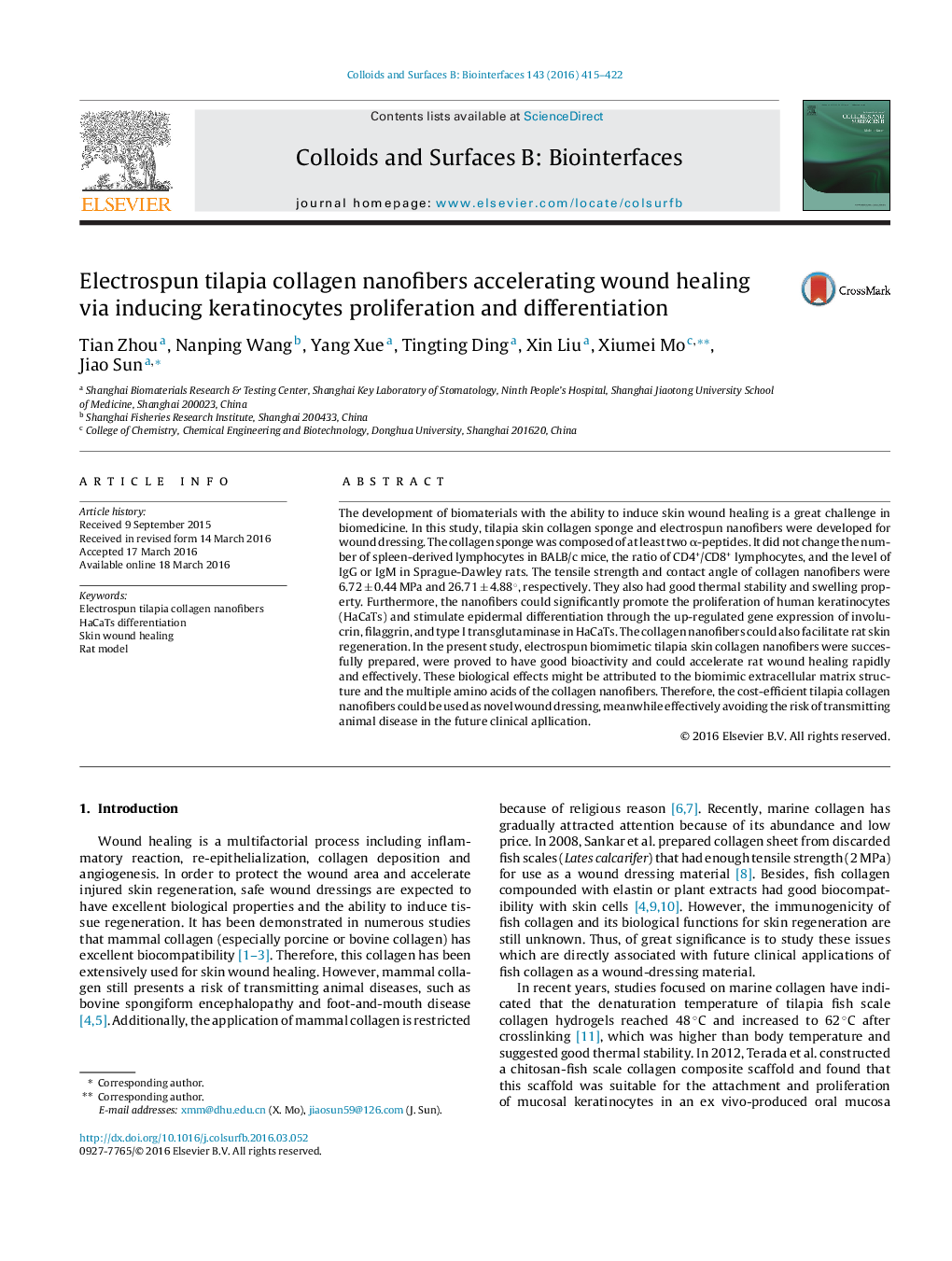| Article ID | Journal | Published Year | Pages | File Type |
|---|---|---|---|---|
| 599064 | Colloids and Surfaces B: Biointerfaces | 2016 | 8 Pages |
•Collagen sponge from tilapia skin was extracted and proved to not induce obvious immune response.•Biomimetic electrospun tilapia collagen nanofibers with suitable tensile strength and thermal stability were developed.•The adhesion, proliferation and differentiation of HaCaTs were promoted by electrospun tilapia collagen nanofibers.•The electrospun tilapia collagen nanofibers could accelerate skin wound healing rapidly and effectively in the rat model.
The development of biomaterials with the ability to induce skin wound healing is a great challenge in biomedicine. In this study, tilapia skin collagen sponge and electrospun nanofibers were developed for wound dressing. The collagen sponge was composed of at least two α-peptides. It did not change the number of spleen-derived lymphocytes in BALB/c mice, the ratio of CD4+/CD8+ lymphocytes, and the level of IgG or IgM in Sprague-Dawley rats. The tensile strength and contact angle of collagen nanofibers were 6.72 ± 0.44 MPa and 26.71 ± 4.88°, respectively. They also had good thermal stability and swelling property. Furthermore, the nanofibers could significantly promote the proliferation of human keratinocytes (HaCaTs) and stimulate epidermal differentiation through the up-regulated gene expression of involucrin, filaggrin, and type I transglutaminase in HaCaTs. The collagen nanofibers could also facilitate rat skin regeneration. In the present study, electrospun biomimetic tilapia skin collagen nanofibers were succesfully prepared, were proved to have good bioactivity and could accelerate rat wound healing rapidly and effectively. These biological effects might be attributed to the biomimic extracellular matrix structure and the multiple amino acids of the collagen nanofibers. Therefore, the cost-efficient tilapia collagen nanofibers could be used as novel wound dressing, meanwhile effectively avoiding the risk of transmitting animal disease in the future clinical apllication.
Graphical abstractFigure optionsDownload full-size imageDownload as PowerPoint slide
